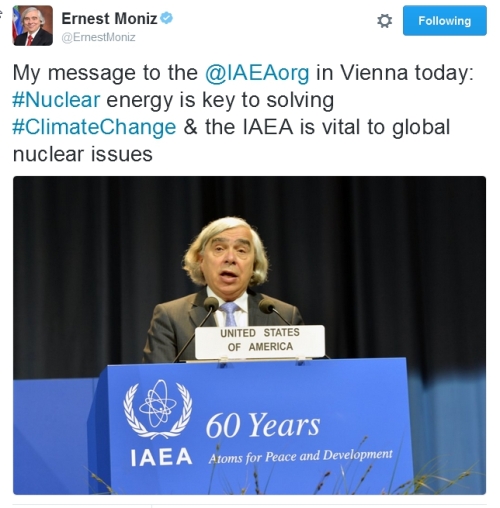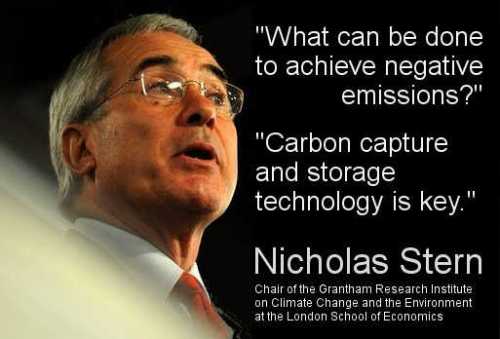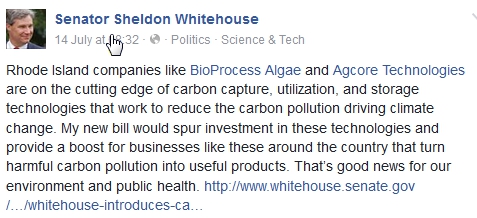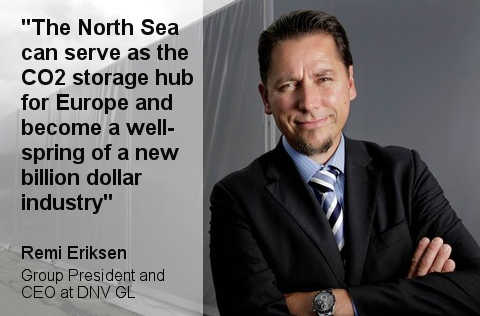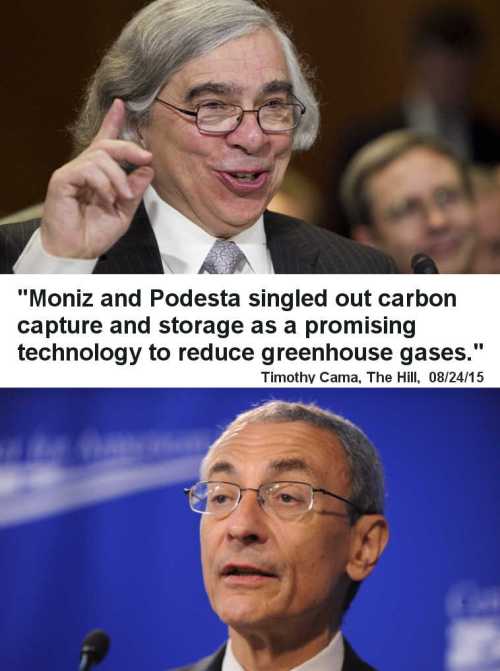Jan 07
20198
350.org / 1Sky, Avaaz, Center for American Progress, MoveOn.org, Natural Resources Defense Council, Purpose [Public Relations Arm of Avaaz], Sierra Club
350.org AFL-CIO Alexandria Ocasio-Cortez Avaaz BECCS Carbon Capture and Storage (CCS) Carbon Capture Coalition Center For American Progress Enhanced Oil Recovery Initiative GetUp! International Brotherhood of Boilermakers MoveOn Natural Resources Defense Council New Green Deal Nuclear Purpose ResPublica Sierra Club Sunrise Movement
The Green New Deal has an AFL-CIO Problem
January 7, 2019
By Michael Swifte
Image: SARAH SILBIGER / eyevine
Not only does the #GreenNewDeal have an AFL-CIO problem, it has an International Brotherhood of Boilermakers problem, an International Brotherhood of Electrical Workers problem, a SMART Transportation Division (of the Sheet Metal, Air, Rail and Transportation Workers) problem, a United Mine Workers of America problem, a United Steel Workers problem, and a Utility Workers Union of America problem. These labor organisations are a problem for Alexandria Ocasio-Cortez, the climate cartel, the Sunrise Movement, and the Democratic Socialists of America because they are all members of the Carbon Capture Coalition which is supporting bipartisan efforts to expand tax credits for carbon capture from coal, gas, and oil for utilization in enhanced oil projects that result in geological storage of CO2.
The Carbon Capture Coalition was formed from the participants in the National Enhanced Oil Recovery Initiative. Executive Director of the Industrial Union Council at AFL-CIO, Brad Markell made this statement at the International Brotherhood of Boilermakers, Legislative Education Action Program (LEAP) 2016 conference:
[Carbon Capture and Storage] is something that those of us who work on energy in Washington are spending a lot of time on. It’s a must-have technology; it’s the way we are going to keep coal plants open in this country. It’s the way we’re going to take advantage of our hundreds of years of coal. [SOURCE]
Cory Channon, the Assistant to the International President and Assistant Director of Construction Sector Operations (Canada) for the International Brotherhood of Boilermakers made this statement ahead of last year’s Accelerating CCS Conference in Edinburgh, Scotland:
The Boilermakers can be part of the solution by insuring that, through the expansion and building of CCS plants, we will be there to complete the construction phases, maintain the work on schedule and on budget. This is our responsibility to every person and living thing on our planet. Please share our video and help us spread the word. [SOURCE ]
The video that Channon is championing is called ‘Bridge to a Clean Energy Future’. It’s a production of Boilermaker Videos and features an interview with Ian MacGregor, the Chair and CEO of North West Refining who are leading the development of the Alberta Carbon Trunk Line which is designed to transport liquefied CO2 sequestered from tar sands refining to depleted oil fields in the Williston Basin for use in CO2 enhanced oil recovery.
In the video MacGregor gives his opinion on those who believe we can achieve anything like 100% renewables by 2030 saying:
40% of the people believe that we’re going to be off petroleum in 10 years from now. Is that on Mars that they believe that?
MacGregor is only one of many corporate executives and CEOs engaged with labor organisations around CCS and enhanced oil recovery. Here is a list of some of the better known corporations participating in the Carbon Capture Coalition:
Air Liquide, Arch Coal, Linde LLC, Mitsubishi Heavy Industries America, Inc, NRG Energy, Occidental Petroleum Corporation, Peabody Energy, Shell [SOURCE]

Richard Trumka, American Federation of Labor and Congress of Industrial Organizations president, addresses members during the quadrennial AFL-CIO convention at Los Angeles Convention Center on Monday, Sept 9, 2013 in Los Angeles. The AFL-CIO plans to open its membership to more non-union groups in an effort to restore the influence of organized labor as traditional union rolls continue to decline. (AP Photo/Nick Ut)
AFL-CIO President Richard Trumka was very specific about his support for carbon capture and storage in his 2016 address to the Boilermakers Convention.
We know carbon capture, use and storage is necessary to reduce global emissions. The truth is, developing countries around the world are building coal-fired power plants as fast as possible. We can address climate change and be an international energy leader by investing in and developing clean emissions technology. It exists. Let’s make it work for us. [SOURCE]
DNC resolutions
In August 2018 only 2 months after it’s June 2018 resolution to reject fossil fuel industry donations, the DNC voted 30-2 in favour of a resolution submitted by DNC Chair, Tom Perez which specifically mentions “fossil fuel workers” and “carbon capture and storage”.
WHEREAS, these workers, their unions and forward-looking employers are powering America’s all-of-the-above energy economy and moving us towards a future fueled by clean and low emissions energy technology, from renewables to carbon capture and storage to advanced nuclear technology; and
WHEREAS, to support fossil fuel workers in an evolving energy economy, we must commit to securing their right to a strong, viable economic future, which includes maintaining employment and their health care and pension benefits; [SOURCE]
In June 2018, Democrat Party strategist Christine Pelosi, daughter of Congresswoman and newly appointed House speaker Nancy Pelosi submitted a resolution to the DNC calling for a response to the negative effects caused by the burning of fossil fuel and “grassroots” action that resembles the efforts of the Green New Deal allies.
WHEREAS, we Democrats have the opportunity to reform and revive our party by empowering diverse grassroots Democrats at the leadership table and in our communities including building on our recent successes with small donor fundraising programs;[SOURCE]
Climate cartel connections
On November 12, 2018 Alexandria Ocasio-Cortez was welcomed into the Congressional Progressive Caucus at the AFL-CIO Washington headquarters along with other new ‘liberal lawmakers’. Representatives of Move On and Indivisible were in attendance.
Th #GreenNewDeal endorsed by @Ocasio2018 calls for “massive investment in the drawdown and capture of greenhouse gases” This means geoengineering, the climate change techno-fix supported by the oil industry and the usual assortment of billionaires. https://t.co/xq59VDXY52 pic.twitter.com/zeuPWDI19r
— Club des Cordeliers (@cordeliers) November 16, 2018
On December 3, 2018 Cortez joined Bernie Sanders, Bill McKibben, Van Jones and others at a ‘town hall’ event organised by the Sanders team. This was the unofficial kick off for the Green New Deal.
Van Jones is a noted author on green jobs, a fellow at John Podesta’s Center for American Progress, a member of the US Advisory Council of 350.org, and a former trustee of the Natural Resources Defense Council who were participants in the National Enhanced Oil Recovery Initiative for 4 years up until the creation of the Carbon Capture Coalition.
Jones’ connection to Podesta is reason for great concern. Podesta has been instrumental to philanthropic efforts to shape climate activism to suit the ambitions of the fossil fuel industry. The ClimateWorks Foundation is at the center of a collection of foundations connected through an agenda setting document first published in 2007 called ‘Design to Win: Philanthropy’s role in the fight against global warming’. Indeed this document is the foundation of ClimateWorks’ efforts for the last decade. It lays out the imperatives for philanthropy to instil in the climate justice and environmental organisations that it incubates and funds.
The plain message from the ‘Design to Win’ is that when it comes to climate change, philanthropies should accept the inevitability of the implementation of carbon capture and storage for fossil fuels. In the intervening decade, with the expansive work of granting organisations like ClimateWorks, the global climate justice movement was incubated to be no threat to the left arm of the neoliberal machine (Democrats). Organisations like MoveOn, GetUp, Avaaz, Purpose, and ResPublica (which all share the same co-founders) play a pivotal role in circling climate activists around to the neoliberal agenda. The granting and incubation efforts of the ClimateWorks Foundation, Hewlett Foundation, Doris Duke Charitable Foundation, Energy Foundation, Oak Foundation, Joyce Foundation, and Sandler Foundation served to help maintain a concession/capitulation position in favor of fossil fuel and biomass based carbon capture and storage. The following passage shows that the underlying assumption for the authors of ‘Design to Win’ was always that coal could not be stopped:
Reduce emissions from unavoidable coal through carbon capture and sequestration (CCS). Even under the sunniest of scenarios, efficiency gains and expanded use of alternative energy sources won’t displace enough coal in the next two decades to forestall catastrophic climate change, so we must find a way to separate CO2 emissions from coal plants and store them beneath the earth. CCS, which remains in its infancy, deserves a critical push from philanthropy so that it can be rapidly deployed where demand for coal power is the greatest. [SOURCE]
Podesta, as a Clinton Global Initiative insider, and as the leader of a global granting body has been highly influential on the messaging and talking points used by the global climate justice movement. He has on several occasions revealed his leanings in regard to carbon capture and storage. He recently visited with Norwegian CCS promoting NGO, the Bellona Foundation.
ClimateWorks, in telling their own story, leave out the sewn-in concession/capitulation to CCS choosing to emphasize their support for ‘climate philanthropy’.
Committed to seeing these strategies put into action, three foundations — Hewlett, Packard, and McKnight — created ClimateWorks in 2008, with the goal of increasing philanthropic impact on climate change. During our first six years, ClimateWorks made hundreds of grants worldwide, helped build capacity in key regions, and collaborated with a network of partners to support research, policy advocacy, outreach and public engagement, all with the aim of reducing the emissions that cause climate change. [SOURCE]
45Q tax credits
45Q tax credits benefit coal and gas burners who sequester CO2 and pipe it to depleted conventional oil fields for oil drillers who use CO2 miscible flooding to liberate the remnant oil.
The expansion of 45Q tax credits which were first passed into law through the 2008 ‘bail out’ bill was achieved by the passing of the FUTURE Act. The passage of the FUTURE Act and the advancement of the USE IT Act represents the most significant bipartisan achievement of the Trump presidency. They were spearheaded by Democrat Senator for North Dakota, Heidi Heitkamp (outgoing) and Senator for Rhode Island, Sheldon Whitehouse.
Heitkamp’s press release announcing the successful passage of the FUTURE Act contained the following statement from AFL-CIO’s Brad Markell:
This is a good day for the climate and a good day for American jobs. These provisions will advance the use of technologies that significantly reduce greenhouse gas emissions, and will create high-paying jobs in the energy, construction and manufacturing sectors. [SOURCE]
Upon the introduction of the USE It Act Republican Senator for Wyoming John Barasso commended the leadership of Democrat senators and acknowledged the bipartisan efforts that brought the bills to their current state.
In developing both the FUTURE Act and the USE IT Act, senators on both sides of the aisle have found areas of common ground.
I appreciate Senator Whitehouse’s leadership as we worked together to develop the USE IT Act. [SOURCE]
When the USE IT Act passed the US Senate Committee on Environment and Public Works Senator Whitehouse made this statement:
Building on the bipartisan cooperation behind the carbon capture and utilization tax credit, this bill can help get carbon removal projects rolling. It signals to utilities that we mean business and points the way for companies in Rhode Island and across the country finding innovative uses for carbon dioxide. [SOURCE]
Senator Heitkamp also underlined the significance of the bipartisan efforts that delivered the FUTURE Act and have helped advance the USE IT Act:
CCUS benefits a wide range of industries, paves a long-term opportunity for North Dakota lignite coal, and supports enhanced oil recovery efforts in the Bakken – all while reducing carbon pollution. Just as we were able to build strong bipartisan support for the FUTURE Act and eventually see it get signed into law, we’re now on the right track with the USE IT Act. Passage in this committee is an important step forward for jobs and economic progress in North Dakota, and an all-of-the-above energy strategy that supports American jobs and will help the U.S. become a leader in developing and selling CCUS technologies. [SOURCE]
The Carbon Capture Coalition statement on the FUTURE Act and the USE IT Act also celebrates the strength and “breadth” of bipartisan support for carbon capture and storage.
The bipartisan support for both bills was unprecedented for legislation of its kind, spanning the political spectrum from all regions of the country and underscoring the breadth of support for carbon capture. [SOURCE]
Mike Langford, National President, Utility Workers Union of America, AFL-CIO also applauded bipartisan efforts and repeated the call for new CO2 pipelines.
The Utility Workers Union of America applauds the bipartisan work of the Senate Environment and Public Works Committee in moving the USE IT Act one step closer to becoming law. In seeking to facilitate the build-out of carbon dioxide pipelines and supporting research into carbon dioxide capture and utilization, the USE IT Act promotes cutting edge technology, enabling the creation of entirely new energy systems that will sustain family-supporting jobs and healthy communities for decades to come. [SOURCE]
All the things that wont change
Copper Mines photo(s) Edward Burtynsky, courtesy Nicholas Metivier Gallery, Toronto
Exploding oil trains, mountain top removal, poisoned and destroyed aquifers, poisoned rivers, oil spills, gas leaks, exploitation and violence against Indigenous people, and the continued hegemony of fossil fuel loving, consumer-overconsumption-driving global elites will continue if the proponents of the Green New Deal do not address the political will for carbon capture utilization and storage as demonstrated by a large segment of North American industrial labor organizations.
Some people will tell you they don’t think CCS is viable, but it is clearly what the big corporations want. They have convinced the big labor organizations to support their plans with the help of philanthropies who spend money with prejudice to incubate activist groups and NGOs with a built in blind spot for the political will. Activist groups like the Sunrise Movement, and political leaders like Alexandria Ocasio-Cortez need to call out those democrats who steered and voted for bipartisan tax credit expansion for fossil fuel energy generation, refining and extraction. If they don’t then the Shangri-La of “100% Renewable” energy will be put even further beyond reach.
Sunrise political director and co-founder, Evan Weber
What we are seeing in the collaboration of the Democratic Socialists of America and the Sunrise Movement – almost certainly incubated by the climate cartel – is the exploitation of a political moment to use ‘climate’ as an object of propagandization to carry particular talking points to the public. The non-profit industrial complex with it’s interlocking directorate of behavior change, movement incubation, and networked governance agencies built this opportunity to propagandize reformist measures to tackle impossible goals while framing out the well funded and impending reality that fossil fools will do everything, absolutely everything they need to do to get their way.
[Michael Swifte is an Australian activist and a member of the Wrong Kind of Green critical thinking collective.]










